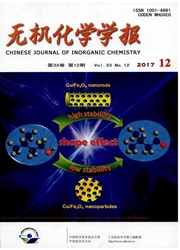

 中文摘要:
中文摘要:
本论文研究含儿茶酚的多巴胺对磷酸钙骨水泥(calcium phosphate cement,CPC)的理化性能和体外降解的影响。将多巴胺溶于Tris-HCl缓冲液于空气中氧化2 d,作为液相与固相粉末混合成型。选取多巴胺浓度、液固比、pH值三因素,通过正交试验选取最优组合。采用万能力学试验机、吉尔摩(Gilmore)针、X射线衍射仪(XRD)、傅立叶红外光谱仪(FTIR)表征含多巴胺CPC的理化性能,用扫描电镜(SEM)观察微观形貌、用紫外可见光分光光度计研究含多巴胺CPC的体外降解。抗压强度结果表明最优组为多巴胺浓度40 mg·mL^-1、液固比0.3 mL·g-1、pH值8.5,最优组CPC抗压强度最高,与空白CPC相比具有极显著性差异(p〈0.01);最优组CPC凝结时间与空白组比较无显著性差异且符合临床要求;XRD和FTIR结果表明多巴胺的加入促进了二水磷酸氢钙(DCPD)的转化;SEM观察发现多巴胺的加入使CPC内部形成了片状结构及较多紧密结合的块状晶体且与空白CPC相比孔隙明显减少;最优组CPC体外降解过程中,多巴胺的累积释放量为加入总量的29.7%,且浸泡过程中浸泡液的pH变化处于人体安全范围内。
 英文摘要:
英文摘要:
The aim of this study is to investigate effects of dopamine (DA) on physiochemical properties of calcium phosphate cement (CPC) and in vitro degradation of DA from CPC. DA was dissolved in Tris (Hydroxymethyl) aminomethane-hydrochloric acid buffer solution and mixed the solution with CPC powders after oxidized for 2 d in air. Orthogonal test was used to optimize the preparation of CPC with respect to the DA concentration, ratio of liquid to solid and pH values. Compressive tests, Gilmore needle tests, X-ray diffraction (XRD), Fourier transform infrared spectroscopy (FTIR) were used to characterize the physiochemical properties of CPC. Scanning electron microscope (SEM) and UV-Vis spectrophotometry were used to observe the micro-morphology of CPC and in vitro degradation of DA from CPC, respectively. Compressive test and orthogonal analysis indicated that the optimal combination CPC was DA concentration 40 mg·mL^-1, ratio of liquid to solid 0.3 mL·g-1 and pH value 8.5, which had the highest compressive strength with significant difference (p〈0.01) compared with that of CPC-Blank. Setting time of the optimal combination CPC decreased slight but no significant difference compared to that of CPC-Blank, which could satisfied with the clinical demands. XRD and FTIR demonstrated that the addition of DA promoted the conversion of dicalcium phosphate dehydrate (DCPD). SEM found that there were more platy structure, lots of nubbly crystals and less porosity in optimal combination CPC compared with CPC-Blank. Cumulative release of DA from CPC was 29.7% and the pH values of immersion solution were safe for human body during in vitro degradation.
 同期刊论文项目
同期刊论文项目
 同项目期刊论文
同项目期刊论文
 期刊信息
期刊信息
